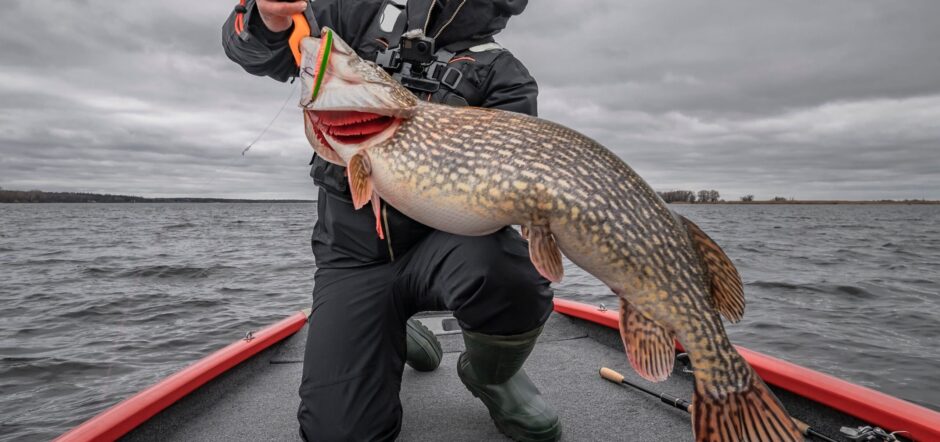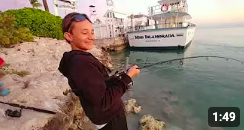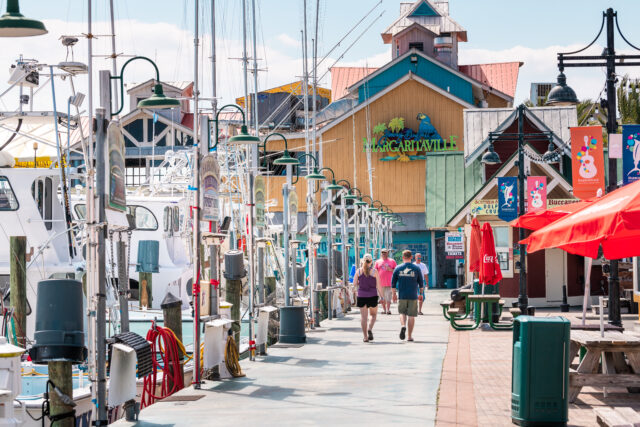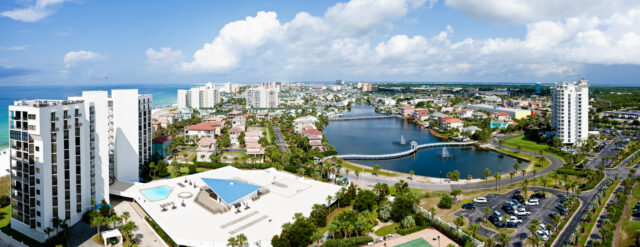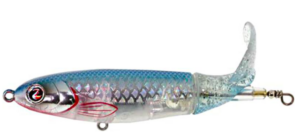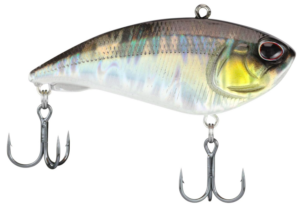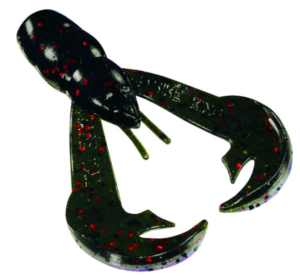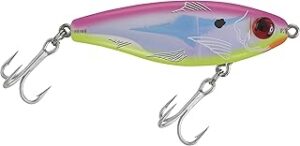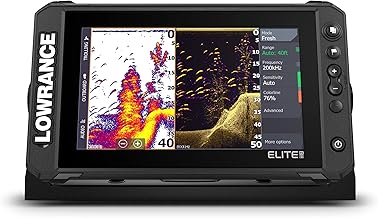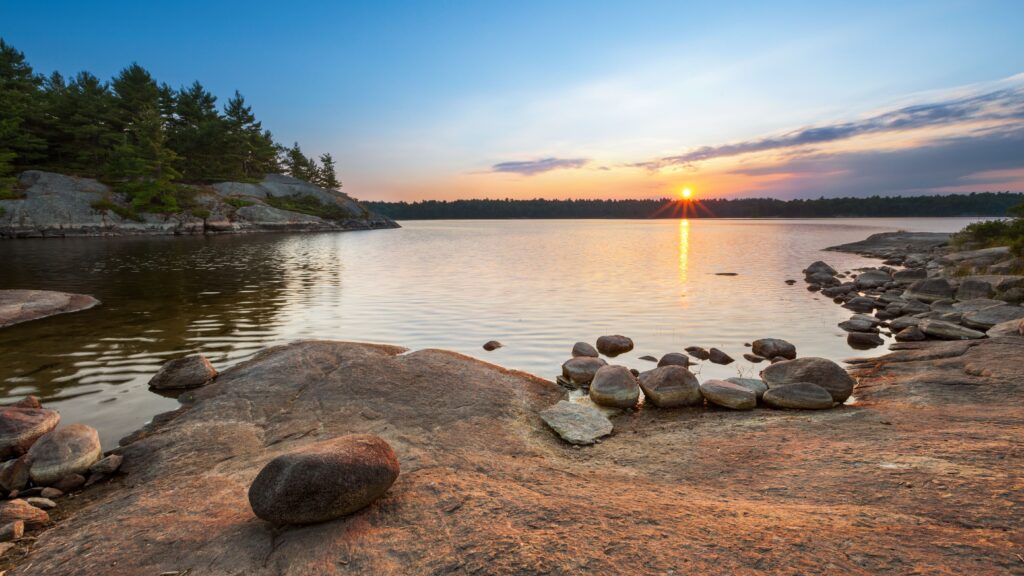
Seasonal Migrations
On smaller lakes, there won’t be much of a seasonal migration. Pike will move into the shallows to spawn, then back onto the deeper weed edges and then occasionally into deeper water of the main lake. These aren’t huge movements because the lakes aren’t big enough for huge movements.
On bigger lakes and reservoirs, pike may move several miles from main lake structures to the bays to spawn in the spring. Then from late spring through early summer, pike will usually stay somewhat shallow until the water temperatures warm up as summer sets in. From mid-summer through fall, there will be a lot of fish out deeper on the main lake structure. Some fish will move back into the bays and the shallows in the fall as temperatures drop below 60 degrees, but as water temperatures continue to drop, the majority of the fish are going to move out to deeper water as winter approaches.
Fish the Bays
The bays provide the easiest pike fishing opportunities. Find some weeds in the bays and you will find fish. The spring and fall are usually better as the bigger pike will move into deeper water in the summer.
Offshore Structure
Pike can often be found on offshore structure. There will always be plenty of fish shallower around the vegetation, however, the offshore reefs and humps can be great spots to target northern pike. From summer through fall, there will always be some quality pike in the deeper water on this structure. On clear water lakes, you may find fish in 30 to 50 feet of water, while in murkier water, they may be 15 to 30 feet deep.
Points
Northern pike will move in and off of the points in search of food. The best points will have some type of weed growth to go along with some shallow and deep water. If you can’t find any weeds, rocks will also hold some pike too. During the spring and fall, you can usually find pike moving into the shallows to feed on perch and other bait fish in 6 o 12 feet of water. During the summer, pike will often be found just off of the points in deeper water. You can find them anywhere from 12 to 40 feet of water on most lakes. All the popular lures will work on the points from jigs to spinner to crankbaits.
Rocks & Boulders
Rocks and boulders are typically better places to fish for walleye or bass, but northern pike can also be caught around big boulders, rocky shorelines and reefs. Northern pike usually prefer weeds to rocks, so it may be more productive to fish the weeds.
You can often find plenty of bait fish near the rocks, so pike will move into these rocky areas at times to feed on bait fish. Crankbaits, spinnerbaits, swimbaits and large in-line spinners will all work well around the rocks. Whether it is the points, a rocky shoreline, islands or an offshore reef, rocks will definitely hold some pike.
Weeds
More northern pike are caught around weeds than any other type of cover. Weeds concentrate lots of smaller fish so it would make sense that pike would cruise these weedlines when they are looking for a meal. The key to catching fish consistently is to find out which types of weeds produce during different times of the year. Broad-leaved species of cabbage are typically the best areas for pike, but this doesn’t mean that every area with cabbage will produce fish. Cabbage beds in shallow bays will hold many fish during the spring and fall. Target these cabbage beds in the spring with spinnerbaits, spinners, spoons, shallow crankbaits, and topwater lures and you will catch tons of pike. In the summer, these shallow cabbage beds will hold mostly small fish if any at all. Deep humps with cabbage will hold fish during the summer and through fall. Reeds, lily pads and other types of weeds will also hold pike.
Wood
Northern pike tend to relate to weeds a lot more than wood, but at times, wood can hold some very nice-sized pike. Stumps, fallen trees, sunken logs, timber and brush are important types of cover especially in rivers and reservoirs because water level fluctuations can limit the growth of weeds.
The best types of wood are around excellent structure. Deep-sloping shorelines with wood are excellent areas throughout the summer and fall. Timber and brush in shallow water are great in the spring. Brushy flats along creek channels will also hold fish, but most fish will be found on the deep side of the cover.
